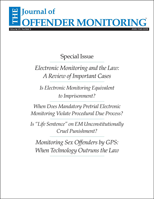Expanding Electronic Monitoring in New Zealand
Author: Marietta Martinovic.
Source: Volume 29, Number 02, Fall/Winter 2016 , pp.26-30(5)

< previous article |next article > |return to table of contents
Abstract:
New Zealand is a significant user of Electronic Monitoring (EM) in the English speaking world, with 8.8% of the country’s total correctionally supervised population under EM at a given time (compared with 4.2% of UK supervised offenders and only 1.7% of U.S. offenders. This article looks at the use of EM in New Zealand, where the technology is used in all stages of the criminal justice process including pre-trial (EM Bail); as a sentence (Community detention, Home detention and Intensive Supervision); as early release from prison (Parole and Work Release/Temporary Release from prison); and as part of supervision post-sentence (Extended Supervision Orders). Two-thirds of offenders/defendants are now GPS tracked and one-third RF monitored. The article explores the reasons behind the extensive application of EM in New Zealand, and the broader political agenda underlying it. In addition, it also compares the use of EM in several other English-speaking countries, and finally it discusses large-scale, methodologically sound, empirical findings about EM’s effect on recidivism rates. It concludes that NZ government’s correctional policy to substantially increase the number of offenders/ defendants on EM makes sense in terms of its penal policy agenda, and empirical findings nationally and internationally.Keywords: New Zealand Politics and Penal Policy; EM Bail; Community detention, Home detention and Intensive Supervision; Parole and Work Release/Temporary Release
Affiliations:
1: Royal Melbourne Institute of Technology (RMIT).